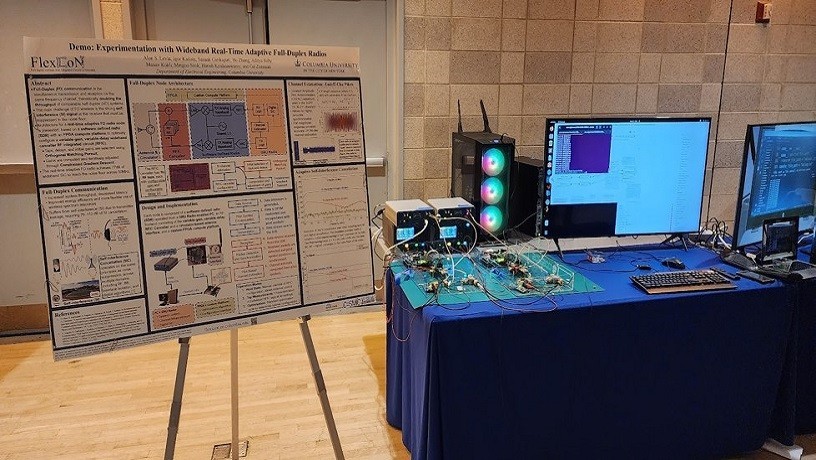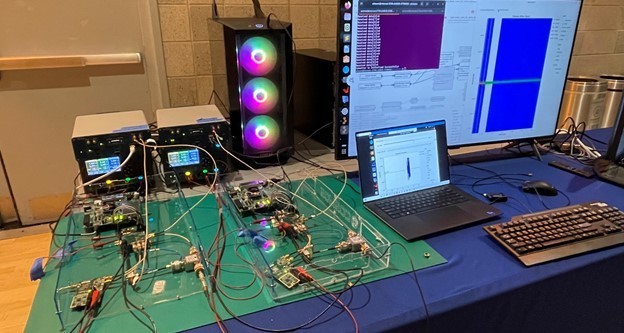PhD Student Alon S. Levin and Team Win 1st Place in the ACM SIGCOMM’23 Student Research Competition (SRC)

Full-duplex wireless represents a major innovation for the networking and communications sector. Today's wireless networks are half-duplex, meaning that wireless devices either transmit and receive in different time slots (which is called time-division duplexing, or TDD) or at the same time but at different frequencies (frequency-division duplexing, or FDD). Full-duplex wireless aims to solve this by enabling simultaneous transmission and reception on the same frequency channel. The development of full-duplex wireless communications will allow for lower latency, improved data rates, and greater spectrum efficiency.
On September 14th, 2023, a demonstration by PhD student Alon S. Levin and several collaborators was awarded first place in the graduate student category of the ACM SIGCOMM Student Research Competition. The demo focused on a wideband adaptive full-duplex radio system and is part of the Full-Duplex Wireless: From Integrated Circuits to Networks (FlexICoN) project. This project aims to improve spectrum efficiency by creating new paradigms for full-duplex wireless communication at all layers of the protocol stack. Levin will now go on to compete in the ACM Student Research Competition in March of 2024.

One of the major challenges with creating a full-duplex wireless system is mainly attributable to a phenomenon known as self-interference. When a device transmits on the same frequency that it is receiving on, the transmission signal creates tremendous self-interference at the receiver. Because that echo can be billions of times as strong as the signal that needs to be detected, it effectively drowns out any possibility of reception.
“We’ve always been splitting across time and frequency channels because if you don’t, you’re basically going to only pick up your own echo, and that echo, which we call self-interference, is billions of times stronger than the signal you’re trying to receive,” said Levin. “The example I like to use is, let’s say you’re in New Jersey whispering — I’m standing here in Manhattan yelling as loud as I can while still trying to make out what you are saying.”
To overcome this issue, Levin, together with a multidisciplinary team, had to develop methods for canceling out self-interference. No one method of cancellation would be sufficient, so the team worked together, combining technologies developed across multiple labs. From the lab of Professor Harish Krishnaswamy came a new radio-frequency integrated circuit, which employs switched-capacitor-based time-interleaved circuits to achieve a highly flexible analog canceller with variable gains and variable delays. The lab of Professor Gil Zussman developed algorithms to measure the self-interference and adaptively control the canceller using digital FPGA-based circuits implemented by the lab of Professor Mingoo Seok.
And Levin, a WiMNet Lab member, brought everything together to form a single cohesive full-duplex radio system. Controlled by a software-defined radio platform running on a local PC, the system achieves intelligent real-time self-interference cancellation using a combination of passive isolation, active analog cancellation, and a final digital cancellation stage. This allows the system to transmit and receive data over an actual wideband full-duplex link. With this technology, one day, consumers could see decreased latency and more available bandwidth, leading to faster speeds for the flow of information.
